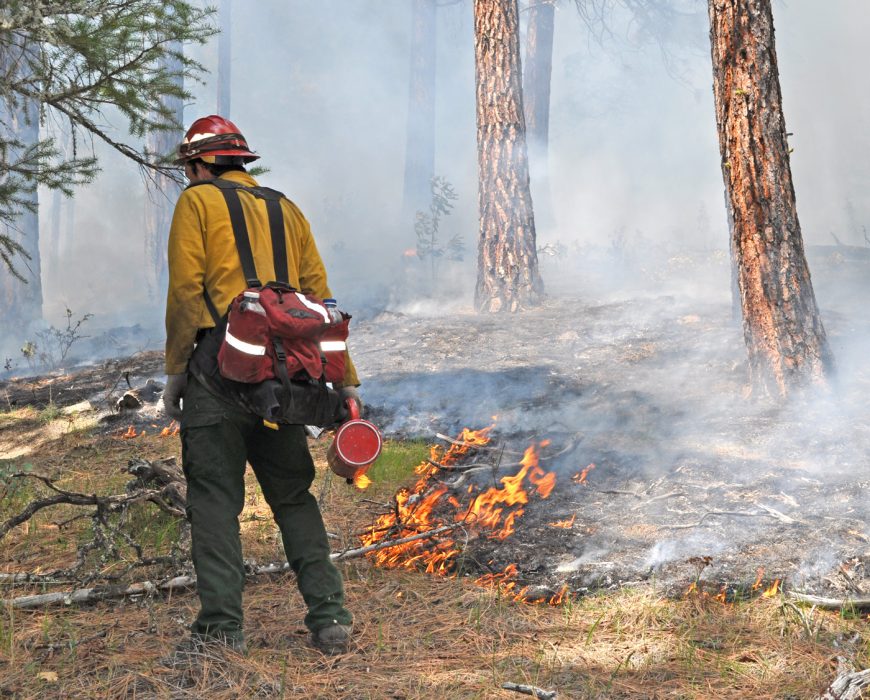World
Prescribed fire’s chaotic world chronicled in new book

A book review by Brian Ballou
Ignition: Lighting Fires in a Burning World
By M.C. O’Connor
“You sing the country before you burn it,” an Aboriginal fire-lighter in Australia told the author. “In your mind, you see the fire, you know where it is going, and you know where it will stop. Only then do you light the fire.”

Close your eyes the next time you are preparing to start a prescribed fire project and visualize its beginning and end. Where will you paint the ground with brushstrokes of fire? What is the wind saying? What tricks does Mother Fire have up her sleeve?
And, importantly, how will the day end? In calm twilight laced with thin smoke and the soft sound of dying, crackling fires? Or in a cacophony of bulldozers and bombers and the sight of your prescribed fire project racing over a far ridge?
“Ignition: Lighting Fires in a Burning World” chronicles author M.C. O’Connor’s deep dive into the world of prescribed fire, mostly in the United States but occasionally elsewhere. She embeds herself with state, federal and private crews as they conduct prescribed burns — taking the training, wearing the clothes, learning the terms and the lingo — and finds it deeply fascinating and occasionally quite frightening.
There is a rush these days to return fire to the land, a belated response to a few decades of staggeringly large wildfires that could have — should have — been tempered by prescribed fire. She talked with many firefighters and fire-lighters and “began to deduce how complex working with fire could be.”
Using fire as a tool is an art people are still grappling with. “Fire-lighters seemed to carry with them a dream of a place where fire was stripped of safety regulations, government qualifications, diesel fuel, and engines. In this pyro-Eden, fire was so benign that lighting one was like watering a garden.”
It’s dizzying to think that something as simple as returning fire to the land could, and likely would, avert highly aggressive wildfire behavior. Could pre-treatment have kept 2018’s Carr Fire from spawning a fire “burning so hot and generating such intense winds that a whirl of fire with winds of 143 miles per hour … slammed into Redding. It picked up a truck and threw it a quarter of a mile down the road, killing the firefighter inside. It was the equivalent of a category 3 tornado.”
Indeed, the fire environment had become so dangerous that firefighters had begun experiencing post-trauma health problems at an unprecedented level. One firefighter O’Connor discussed this with “made me consider that confronting a monster — what you saw out there, the feelings you experienced and things and people you lost — could exact a mental and spiritual cost.”
“I thought about the dragon-fighting analogy a lot,” wrote O’Connor, digesting what she had been told by firefighters coping with wildfire-induced PTSD. “It conveyed something of the monstrous qualities of the wildfires themselves and hinted at the quixotic nature of fighting them.”
After years of fighting wildfires, some “began to see suppression as a lost cause.” One said, “If a fire was close to any type of community, it never crossed my mind that we shouldn’t go put the thing out. [But] I was on a lot of fires way out in the wilderness where I thought, Well, if somebody gets hurt or killed out here, this is really dumb. This is kind of for nothing, this is a lightning fire. This area needs to burn.”
With so much land needing a fire, and wildfires increasingly getting larger and more dangerous, agencies have embraced programs like TREX, in which fire-lighting skills are taught and tested. However, actual prescribed fires have moved forward slowly due to the fear of losing control of the burn, destroying private land and homes, even though this has rarely occurred.
“Of the roughly forty-five hundred fires [the Forest Service] ignited each year,” writes O’Connor, “fewer than 1 percent of them escaped control. The ones that did, however, were often emblazoned in collective memory and cited for decades. People didn’t forget, let along forgive, when the government intentionally lit fires that ended up burning down homes.”


Nearing the conclusion of her book, O’Connor highlights the Washburn Fire that burned in 2022 within Yosemite National Park. The news media homed in on whether the fire would consume the Mariposa Grove of giant sequoias. “The Washburn Fire and so many others became apocalypse clickbait.” The news media nearly completely ignored the fact that areas that had been treated with prescribed fire burned with much lower intensity, if at all.
“Ignition: Lighting Fires in a Burning World” is a fine read, and I find it particularly impressive that it was written by someone who knew next to nothing about prescribed fire. Perhaps that was best.
She asked wildland firefighters whether the current fire environment was too dangerous — an interesting question for people who sorta kinda really really like having a bit of danger in their day — and learned that maybe, yes, it was getting a bit too hairy out there.
O’Connor never provides a succinct message at the end of the book. I rather like that. But the alignment of the various segments of the book make it clear: The time for prescribed fire is today, yesterday and tomorrow. No, it won’t always be pretty.
Brian Ballou retired from the Oregon Dept. of Forestry where he was a fire prevention specialist and public information officer. In the 1970s and ‘80s he was a firefighter with the US Forest Service. He lives in Medford, Oregon.
Ignition: Lighting Fires in a Burning World
By M.C. O’Connor
Bold Type Books
Copyright 2023
Nonfiction
Hardbound, 372 pages, $30 (also available from Amazon and Apple in ebook format)









